Canon EOS 5D Mark III - Third Time's a Charm
Canon's Mark II users have been waiting three years for the third 5D in the series, and it's been well worth the wait - the camera has been vastly improved in nearly every aspect. Read on to discover how and why it's our Editor's Choice winner.
By HardwareZone Team -
Introduction
More than three years ago, the Canon 5D Mark II became an unlikely revolutionary – its ability to shoot Full-HD video sparked off the video DSLR revolution, and in the time since, Canon's HD DSLRs have been used to film documentaries, TV series and even Hollywood movies.
Its successor, the 5D Mark III, is more of an evolution than a revolution, but as this review will show, that isn't necessarily a bad thing. In fact, the Mark III is so much more improved over the Mark II that we could even describe the Mark III as an evolutionary leap - this camera could very well have been called the Mark IV and nobody would have batted an eyelid.
While megapixel count has not increased much, from the Mark II's 21.1MP to the Mark III's 22.3MP, performance has been greatly improved. The camera comes with Canon's Digic 5+ processor, which made its debut in the flagship 1D X. The Mark III's native ISO sensitivity has been increased as it can now shoot up to ISO25,600 and is expandable to ISO102,400. It also comes with dual-memory card slots, one for CF and one for SD. The Mark III is also faster, shooting at a maximum speed of six frames per second compared to the Mark II's four. And it gains the same 61-point AF system found in the 1D X, much more than the nine points found on the Mark II.
The following is a video of the local media launch of this new camera where we spoke to key Canon executives for their viewpoints of this camera and some of its handling highlights. And here's a comparison between the 5D Mark III and the Mark II:

Specification | 5D Mark III | 5D Mark II |
Sensor | 22.3MP Full-frame (36 x 24mm) | 21.1MP Full-frame (36 x 24mm) |
Max. Image Size | 5760 x 3840 pixels | 5616 x 3744 pixels |
Image Processor | Digic 5+ | Digic 4 |
Max. Frames Per Second | 6fps | 3.9fps |
ISO Sensitivty | ISO100-25,600 (expandable to102,400) | ISO100-6400 (expandable to 25,600) |
Auto-focus System | 61-point high-density reticular AF
(up to 41 cross-type points) | 9-point TTL
(1 cross-type point) |
Exposure Metering Sensor | iFCL metering with 63 zone dual-layer sensor | TTL full aperture metering 35 zone SPC |
Viewfinder Coverage | 100% | 98% |
Storage Media | 1x Compact Flash and 1x SD | 1x Compact Flash |
LCD Size | 3.2-inch diagonal TFT-LCD | 3.0-inch diagonal TFT-LCD |
LCD Resolution | 1,040k dots | 920k dots |
Weather Sealed | Yes | No |
Battery Life | With viewfinder shooting: 950 shots at 23°C, 850 shots at 0°C | With viewfinder: approx. 850 shots at 23°C, approx. 750 shots at 0°C |
Dimensions | 152 x 116.4 x 76.4mm | 152 x 113.5 x 75mm |
Weight (body) | Approx. 860g | Approx. 810g |
Recommended Retail Price | US$3,499 | US$2,699 |
Design & Handling
Compared to the 5D Mark II, the Mark III looks more curvaceous and organic. The cleaner hood and wider lens mount gives it a strong stance, but it also looks more refined, with matte buttons, subtler cut lines for the buttons and more definition in the back hand rest. The camera feels comfortable in the hands, with a good grip and heft.

The 5D Mark II (left) and the Mark III (right). Image not to scale.
Acoustically sensitive photographers may like to know that special attention was paid to the Mark III's shutter sound, which is distinctive from the Mark II's and quite pleasing (for those interested to know how it sounds like, check out the video on the first page). There's an optional silent shooting mode which will mute the shutter sound somewhat but it also reduces the maximum shooting speed to three frames per second. This feature made quite a difference when we were shooting a concert as we found out firsthand when switching camera bodies from Mark II to the Mark III; it was noticeably less obtrusive in that quiet environment.
Photographers used to their 5D Mark IIs and are thinking to upgrade to the newcomer will however have to contend with some re-learning as the controls and usage differs some. The On/Off switch has been shifted to just below the top Mode dial while the Menu and Info buttons have also been moved upwards (refer to the photo below and above for more clarity). The Mode dial itself comes with a lock to prevent accidental changes since the on/off control is now in very close proximity. Further to that, there are no separate magnify in and out buttons on the Mark III. So to zoom in on an image now requires pressing the magnify button and then using the main dial to zoom in and out (it takes a while getting used to).
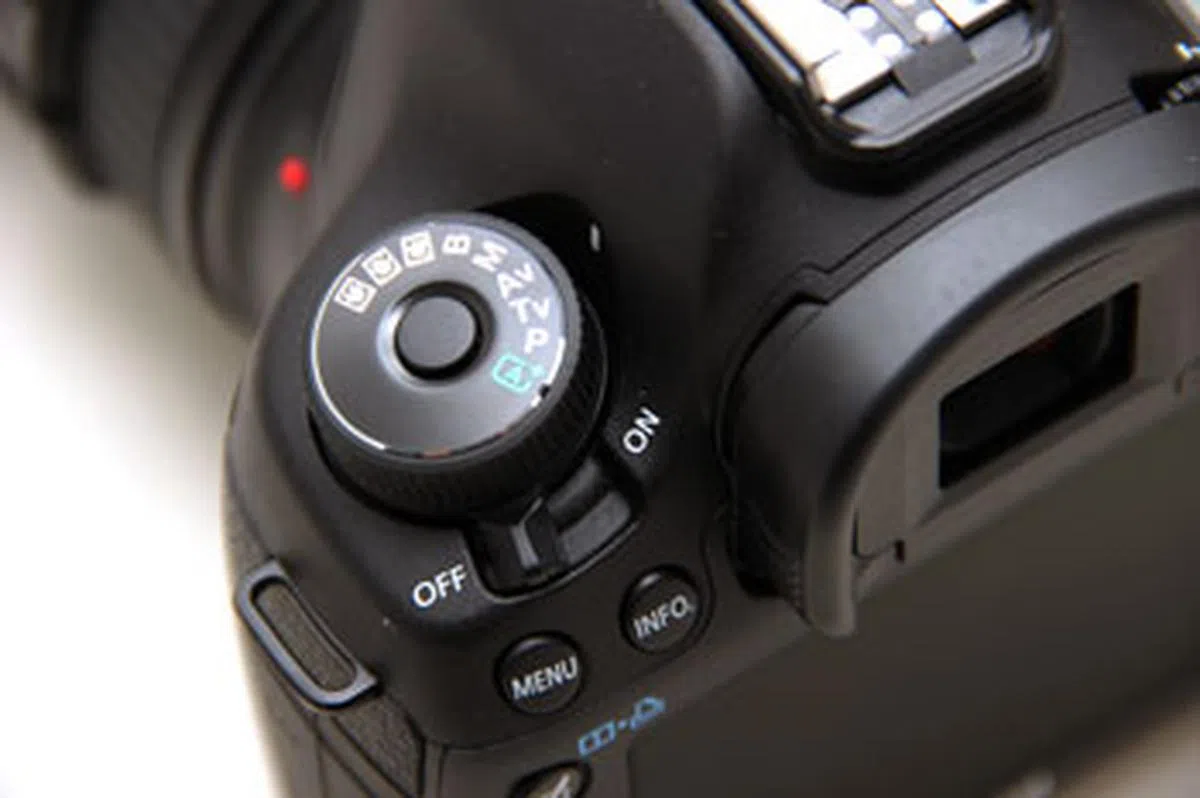 | 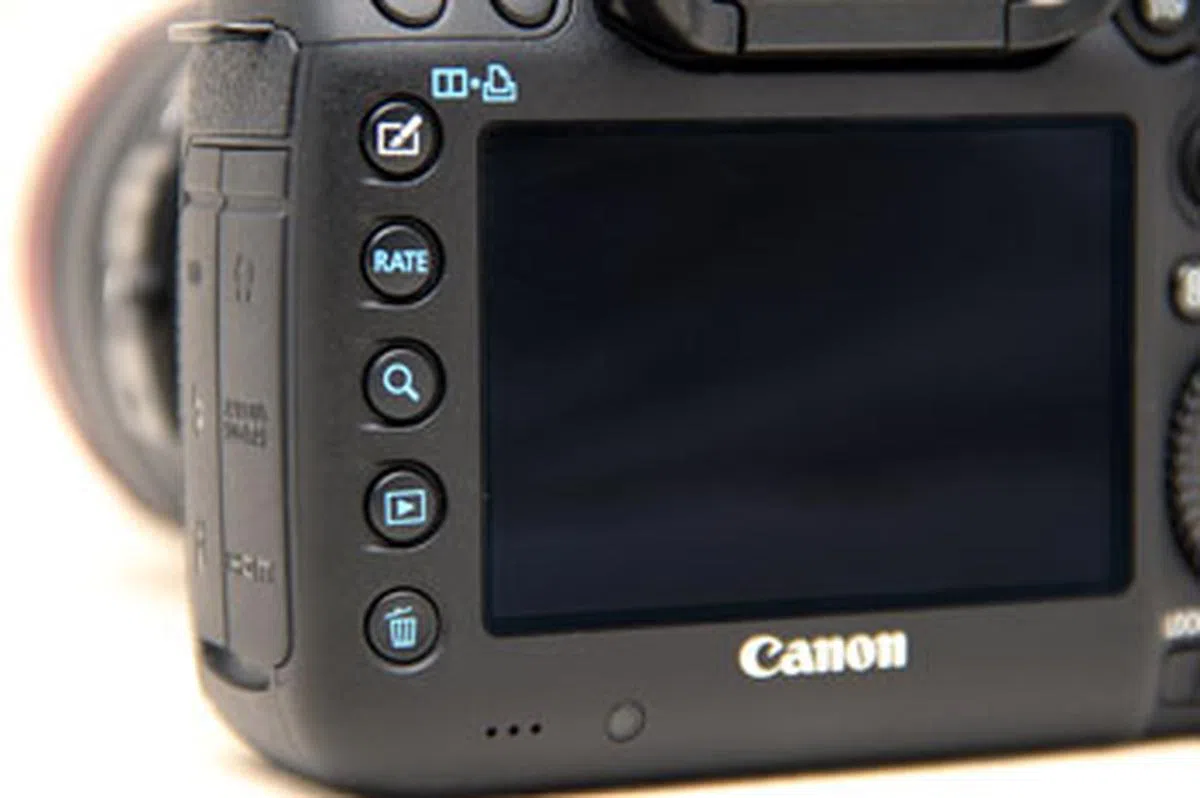 |
The Mark III gains a new 'Q' button which provides you immediate access to the Quick Control screen where you can view and change essential settings like AF mode, white balance and ISO speeds (this was previously accessed via pressing down on the multi-controller/joystick on the Mark II).
The Mark III also has a Live View/movie mode switch, like the one on the EOS 7D. The switch indicates the camera's shooting mode, either stills or video, pressing the center Start/Stop button activates Live View while in stills mode, and pressing it in video mode starts and stops movie recording. Besides the switch, the Mark III also has a 7D-like lock switch, when engaged it will lock the main dial, control dial and multi-controller from moving. The top plate's controls are left unchanged, except for the additional of an M-Fn (multi-function) button which is responsible for changing AF area selection mode.
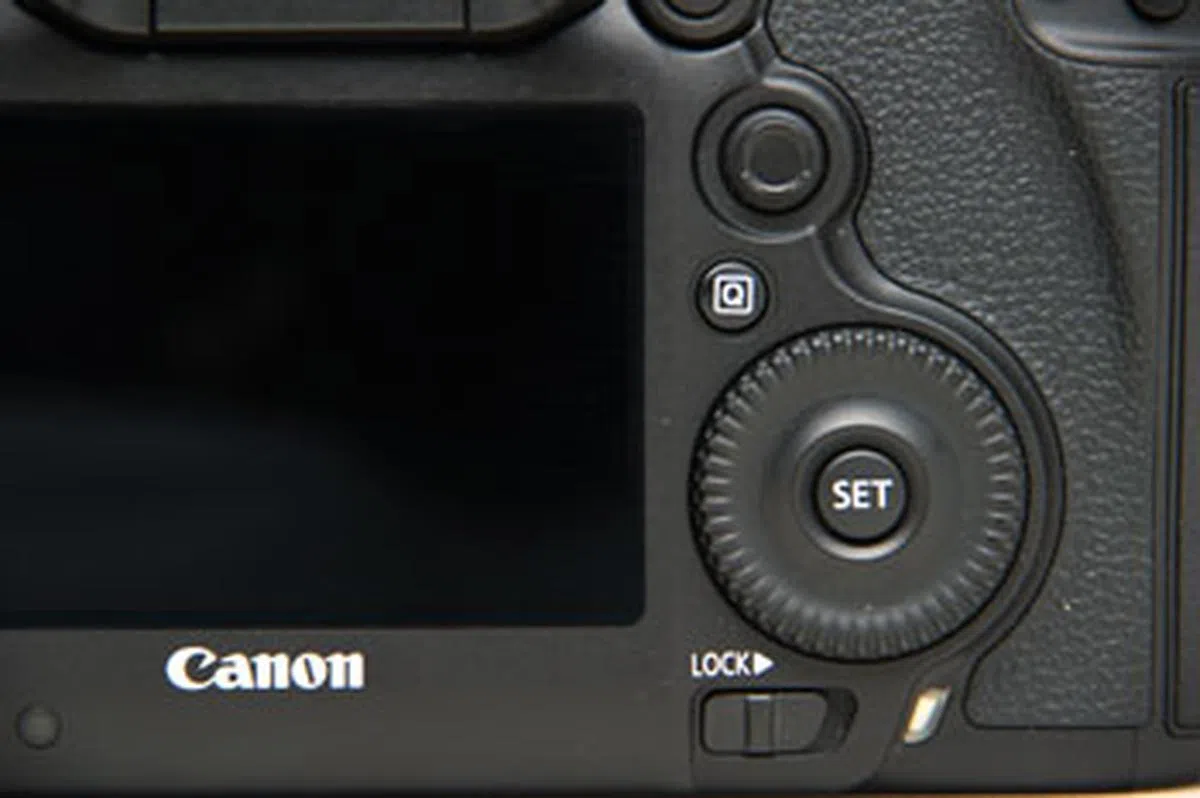 | 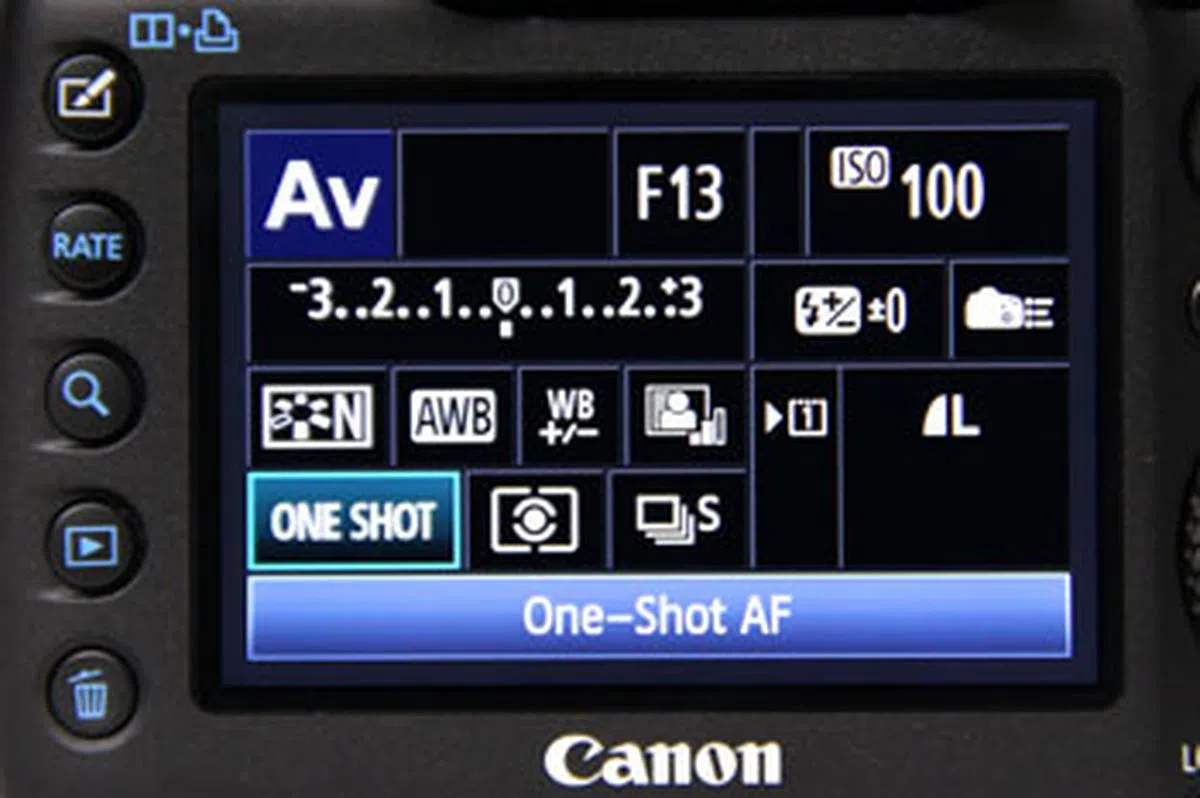 |
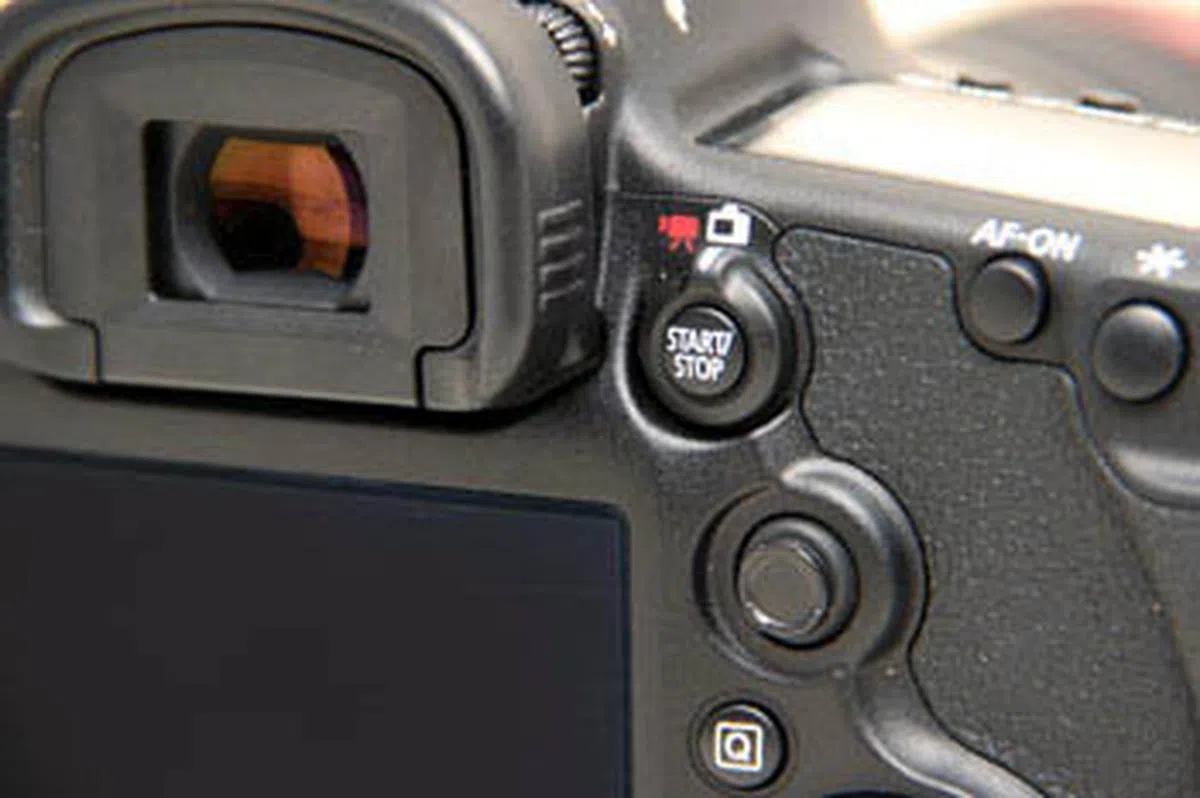 | 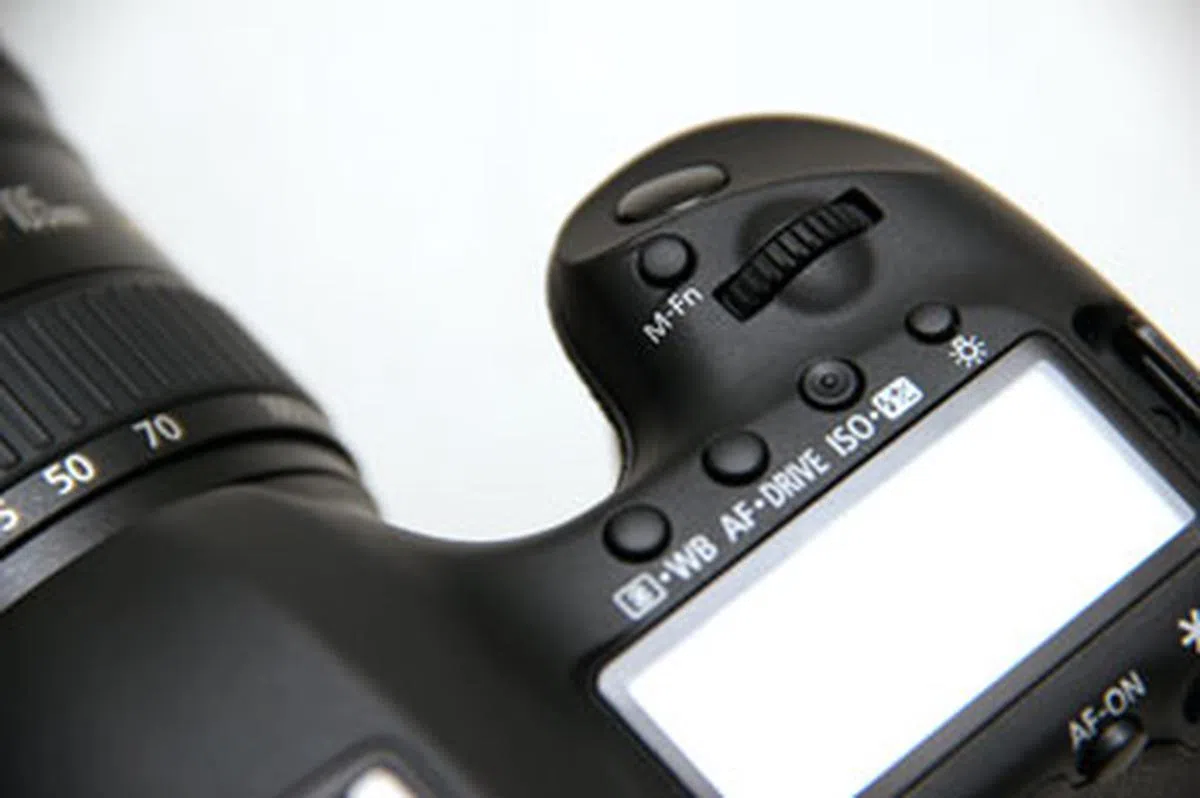 |
Design & Handling - Auto-Focus
The 5D series finally gains a professional AF system with the 61-point AF upgrade, the same system as found on the flagship 1D X. The Mark III's AF has its own AF menu and six possible AF Area Selection Modes. AF Modes are the standard One Shot, AI Servo and AI Focus AF found on other Canon DSLR cameras.
- One Shot AF focuses once when the shutter button is half-pressed - this is best suited for still subjects.
- AI Servo AF will continuously seek focus when the shutter button is half-pressed - this is better for moving subjects.
- AI Focus AF will automatically switch in-between the two modes if a still subject starts moving. AF Area Selection Modes are explained below.
Fine-tuning AI Servo AF
The AF menu is used to fine-tune AI Servo AF but can be a little confusing. There are six different cases, which are varying combinations of tracking sensitivity, acceleration/deceleration tracking and AF point auto-switching.
Case 2 for example, will "continue to track the subject, ignoring possible obstacles", while Case 4 is "for subjects that accelerate and decelerate quickly." While we can see its applications for different sports, it seems tough to define the various use cases. For example, Case 5 is "for erratic subjects moving quickly in any direction" while Case 6 is "for subjects that change speed and mover erratically."
If these descriptions don't work for you, you can adjust each case's three parameters yourself. You can also simply use Case 1, which is a "versatile multi purpose setting" for "any moving subject."

How AI Servo AF works can be fine-tuned using six presets.
AF Area Selection Modes

The Mark III gains the 61-point AF system used by the 1D X, 41 points are cross-type AF sensors. Image source: Canon USA.
AF Area Selection Modes has also been expanded with six options. Single-point Spot AF gives you a single point for precision focusing, while single-point AF selects one AF point for focusing. Sounds similar? Single-point Spot AF is essentially the same as Single-point AF, but the AF point covers an even smaller area inside the AF point (illustrated by a small square within the AF point) to focus. This is a precision method for when you need to be really precise with your focus point.
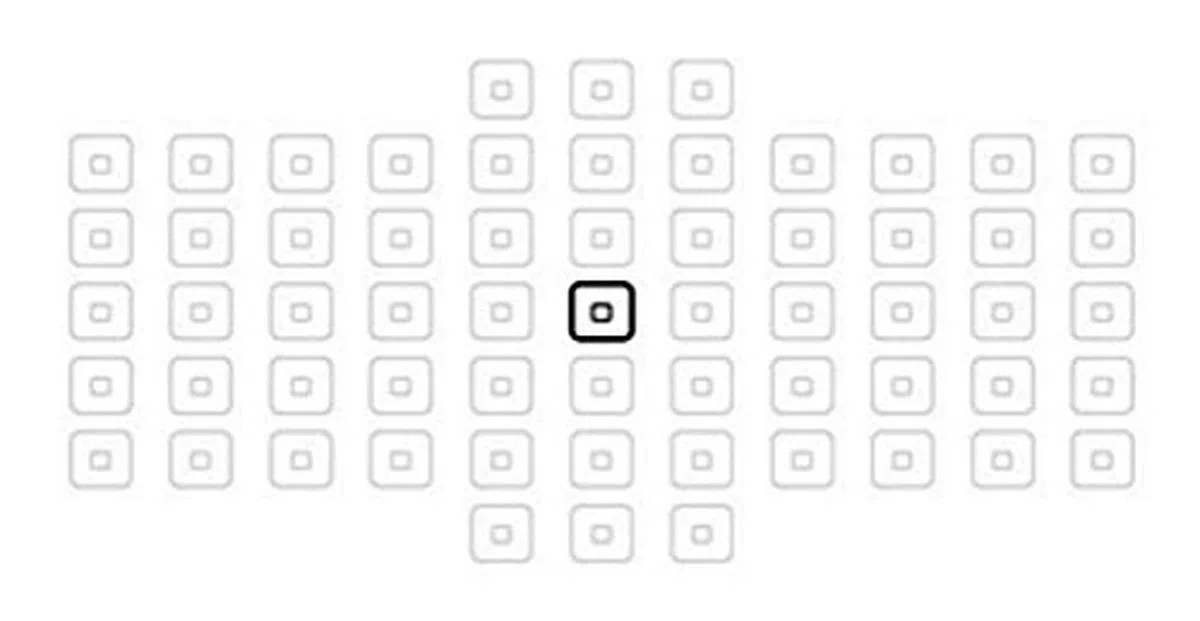 | 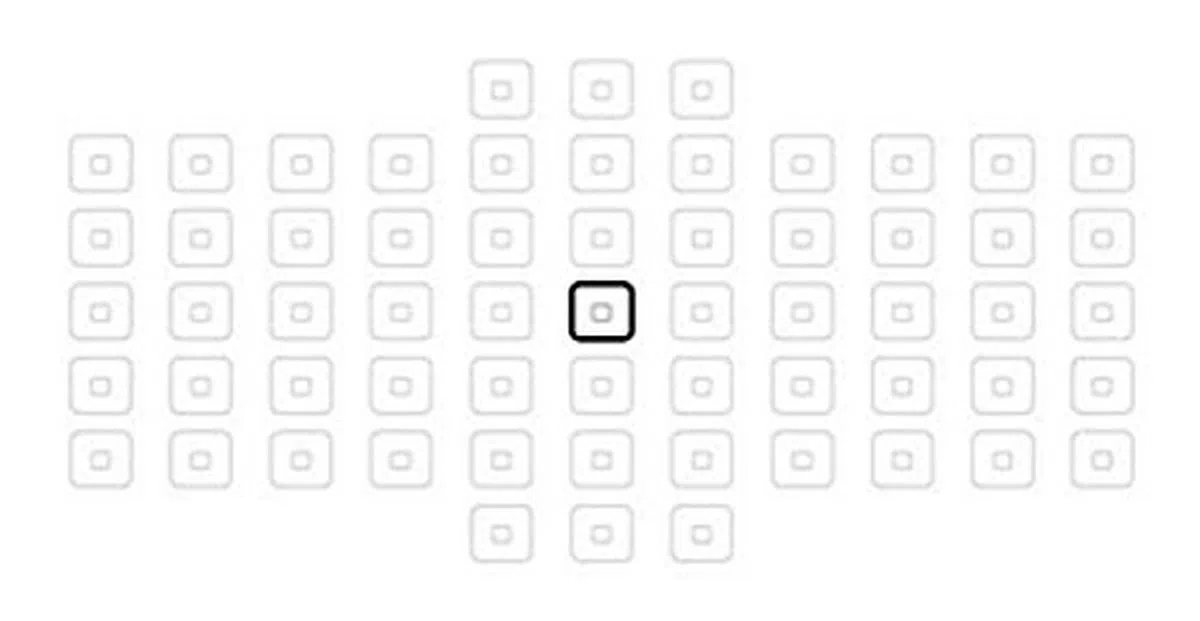 |
Then there are the two AF point expansion options. In the first AF point expansion mode, the AF point, as well as the four AF points above, below, left and right of it are used to focus. In the second AF point expansion mode, the AF point and the surrounding eight adjacent points are used to focus. Next, Zone AF divides the 61 AF points into nine zones for focusing, where all the points within a zone are used to achieve focus.
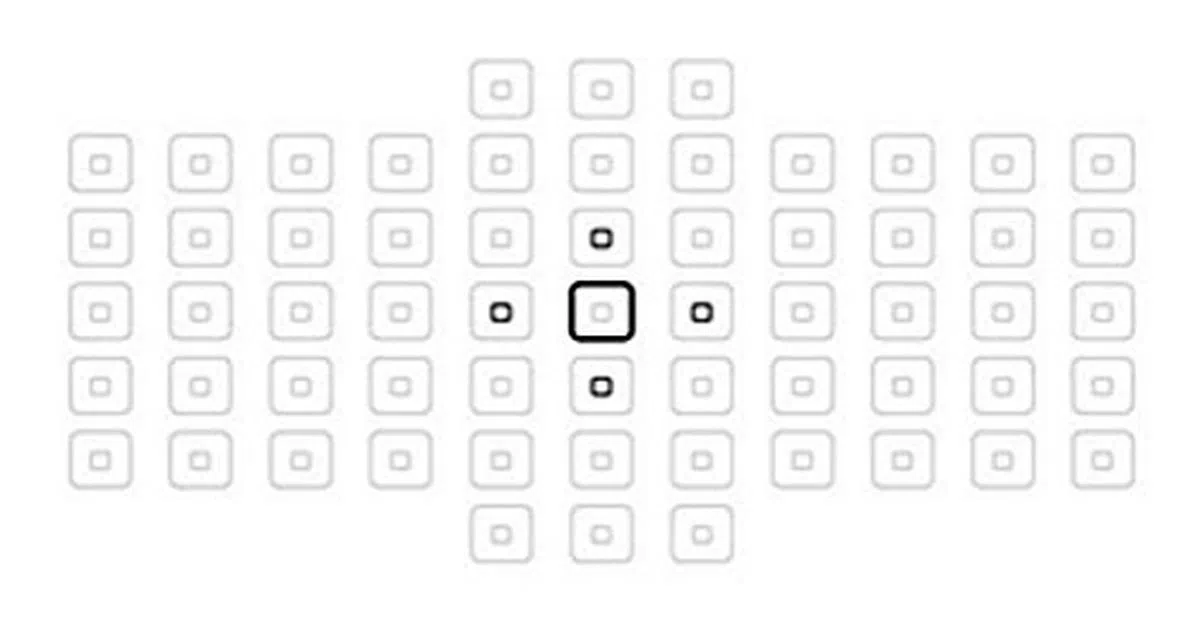 | 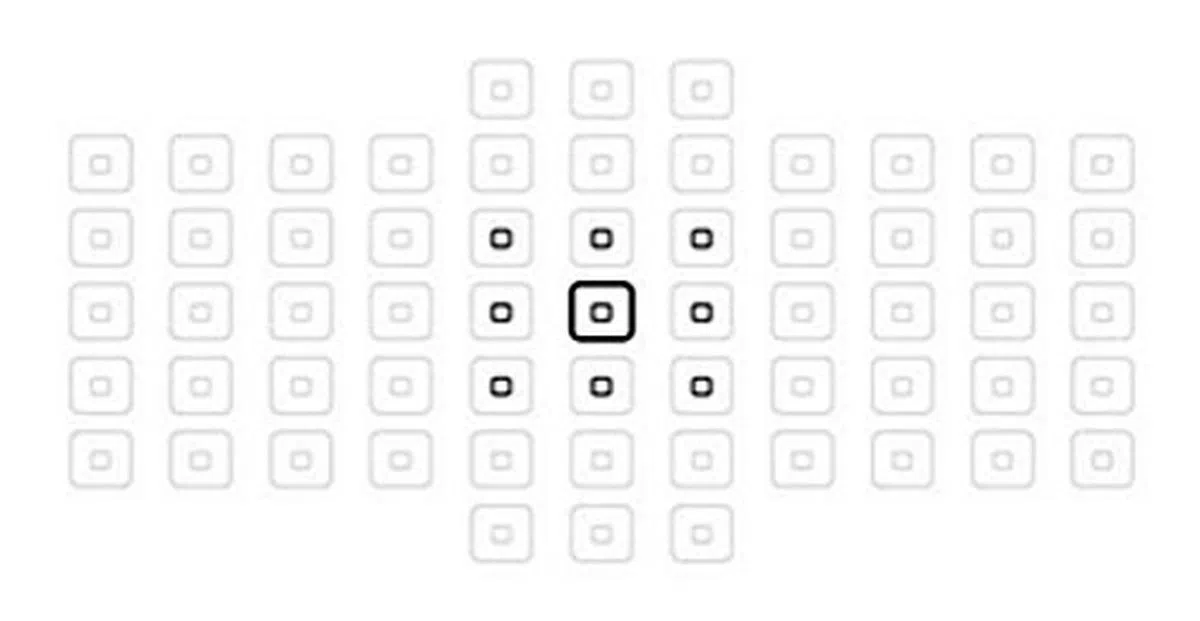 |

Zone AF. Image source: Canon USA.
Together, these three AF Area Selection Modes are the most useful for manual AF area selection when shooting moving subjects. The last AF Area Selection Mode is 61-point automatic selection, where the camera will find the focus points itself. Set in tandem, the AF Area Selection Modes and AF Modes provide a wide variety of auto-focusing shooting styles. If these are one too many modes for you, you can even custom toggle some of them off.
Like on the Mark II, the joystick can be custom set to trigger AF area selection immediately, without having to press the AF point selection button first. The one area of weakness lies in switching modes on the fly using the top LCD panel. To choose between the six different modes you press the AF point selection button, and then press the M-Fn button to switch modes. The LCD panel is not helpful in this regard, as it'll simply display the same "SEL" title no matter which manual AF selection mode you switch to. To see which mode you're in, you have to either look through the viewfinder or press the Info button to have it displayed on the back LCD monitor. This is an area for future refinement.

The Mark III will display the same 'SEL' title no matter which manual AF selection mode you switch to. To see which one you're currently in, you have to look through the viewfinder or press the Info button to view mode selection on the LCD.
Auto-Focus Performance
We found that in general, the 5D Mark III showed a marked improvement in auto-focus speed and accuracy over the Mark II. The camera usually nails the right subject in automatic selection mode, and the expanded 61 AF points certainly play a big part. We did find that the camera will sometimes struggle in low-light, but will do well in most indoor environments. It will track reasonably fast moving subjects well, like people walking and running, but it will sometimes get confused with very fast subjects like gymnasts and tracking in/out of the speedy subject.
While Canon says the Mark III shares the same AF system with the 1D X, it's more than likely that the 1D X will out-perform the Mark III. The 1D X comes with three processors while the Mark III has one, and one of the three processors in the 1D X is dedicated to metering and AF alone. Still, with the Mark III's relatively fast six frames per second shooting speed, we find that it is quite possible to shoot sports with this camera using the right combination of AF Area Selection Modes and AF Modes.
AI Servo Image Shooting Priority
The camera comes with a further option to fine-tune its shooting performance when shooting bursts. You can tell the camera to put priority on either focus or release on the first frame, and focus or speed on the second frame.
What this means is that the camera will either lock focus first and then shoot (priority on focus, first frame), or it will simply start shooting the moment you press the shutter even if focus hasn't been achieved (priority on release, first frame). Subsequently, the camera will either lock focus in-between each successive shot before shooting (priority on focus, second frame) which may slow down the maximum frames per second, or it will simply keep on shooting (priority on speed, second frame). Be default, the camera sets equal priority to both parameters.
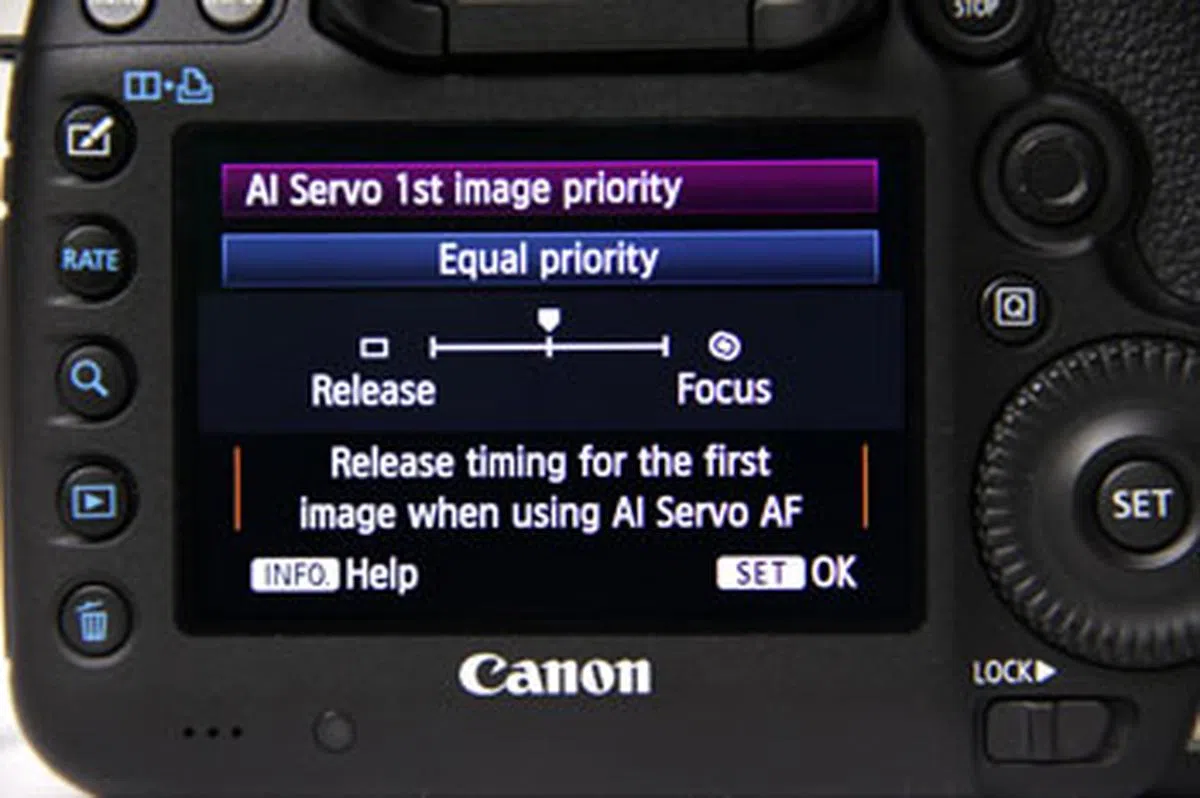 | 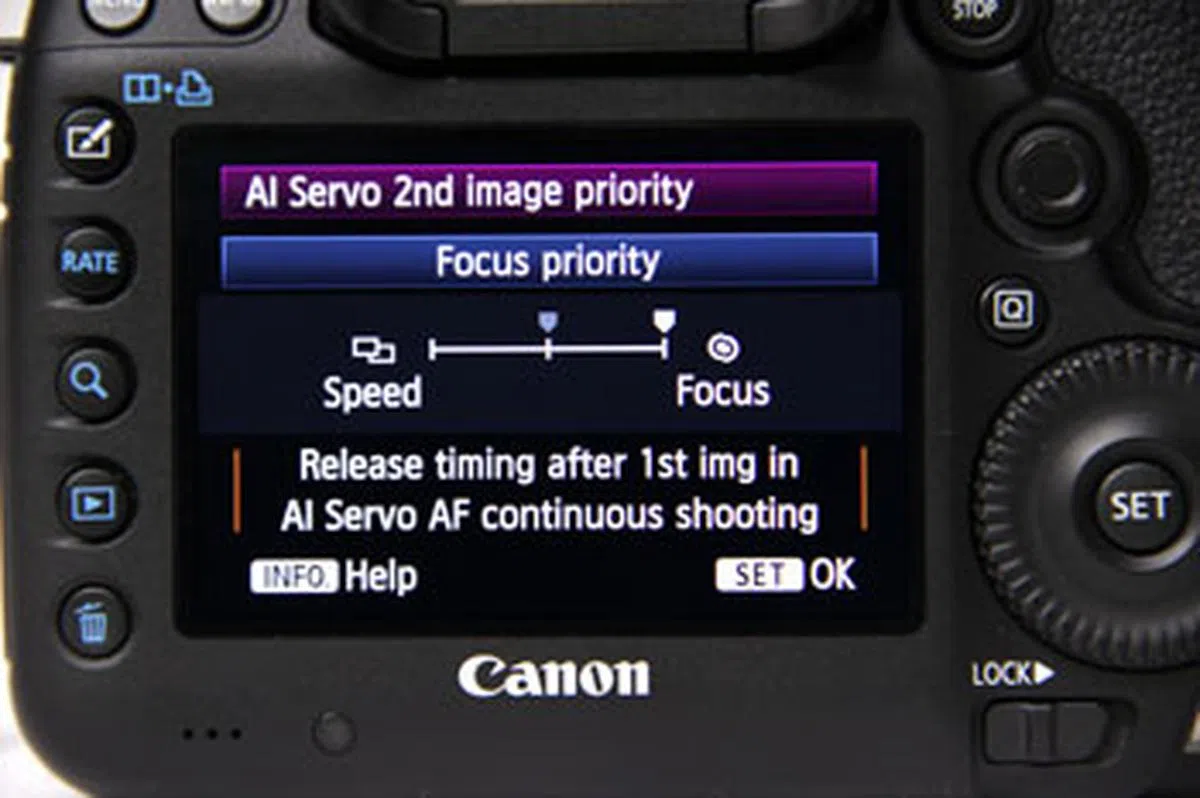 |
Design & Handling - Live View
While the 5D Mark II was an accidental video revolutionary, the Mark III has been purposefully redesigned for video shooting, with a few hits and misses.
The Mark III comes with a headphone jack, which gives the videographers the ability to listen to captured audio. Monitor audio levels can also be displayed on Live View; with the ability to adjust them as the camera is recording (the onboard microphone is mono).
Audio levels, as well as other settings, can be adjusted while recording by pressing the 'Q' button and using the rear Quick Control Dial. The problem with doing that is that the onboard microphone will pick up the clicking sound of the dial as it turns. Canon has cleverly solved this problem with the Silent Control feature. When enabled, the Quick Control Dial's inner ring turns into a touch-sensitive d-pad, which you can tap to change settings quietly, but for some reason it only works when the camera is recording.
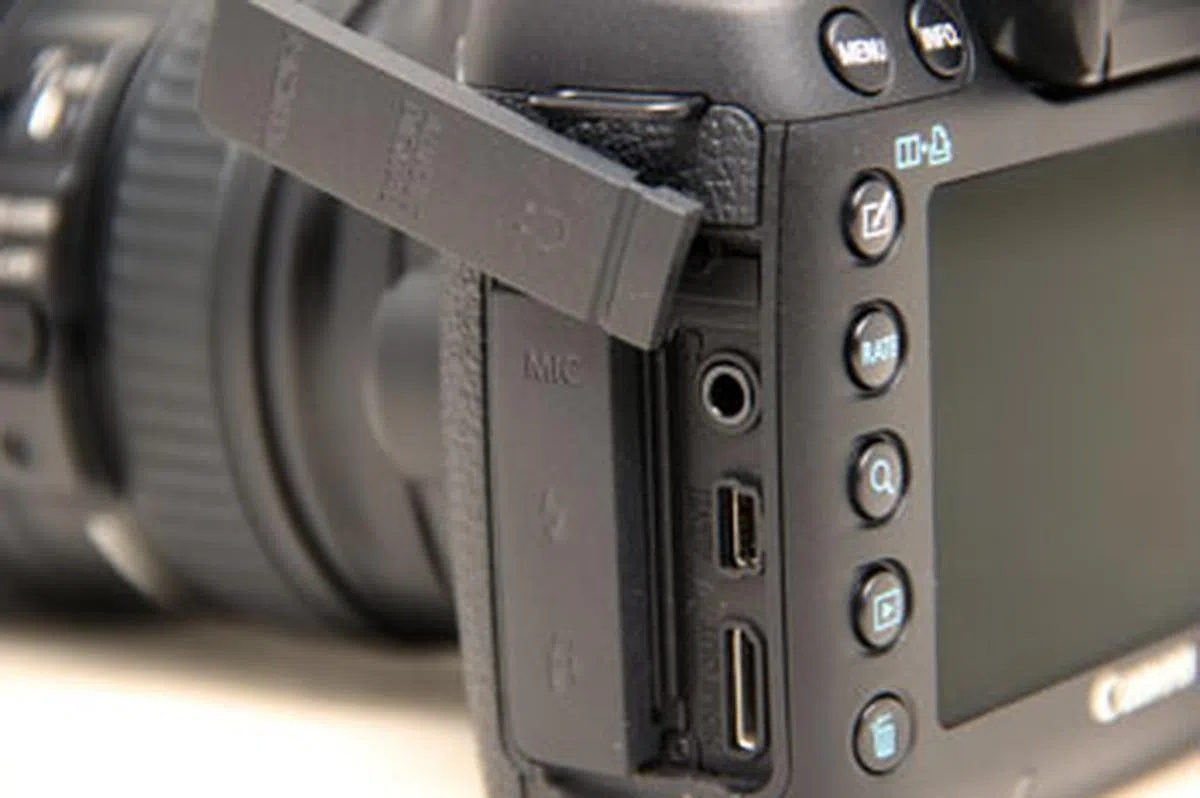 | 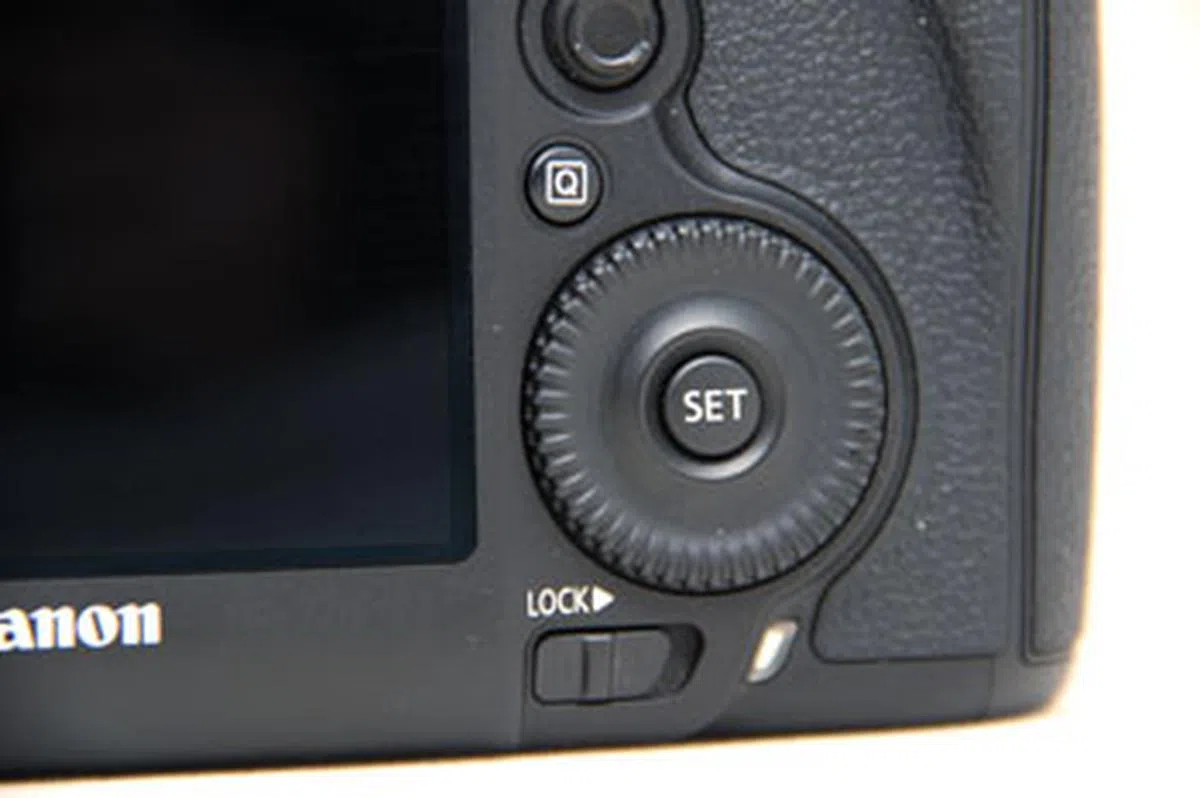 |

While it's useful to be able to monitor audio levels while recording, the screen is cluttered with too much other information at the same time.
While being able to monitor audio levels while recording is a welcome feature, we can't help but feel that Canon has packed way too much info together with audio levels on the Live View screen – nearly one-third of the viewing screen is obscured by other information. Unfortunately, what is displayed can't be customized, and we hope this is something which Canon will allow in future firmware updates.
Instead of abruptly stopping video recording when it reaches the maximum file size of 4GB, the Mark III will automatically continue recording to a new video file. It can also now shoot up to 30 minutes of video (comprised of three separate clips stitched together) instead of the Mark II's 12-minute limit. Unlike the 1D X (as well as the Nikon D4 and D800) however, the Mark III cannot output non-compressed footage via HDMI to an external recording device, but the Mark III does gain SMPTE time-code embedding.

f/6.3 at 35mm, 1/125 sec, ISO12,800. Click for full-resolution image.
Image Performance
The 5D Mark III not only shows improvements over handling and AF, but also advancements in image quality. Mark II users will find that the Mark III can shoot at higher ISO levels than before and still remain quite clean and usable. Resolution scores a very high 2800 LPH (horizontal and vertical) on our test charts. The camera has a tendency to underexpose, but also delivers enough dynamic range to comfortably lift the shadows in post-production.
The Mark III shoots very cleanly up to high ISO settings; the camera retains detail and suppresses the appearance of noise very well. Detail is kept very nicely from the low ISO levels to ISO1600, and we would keep shooting at ISO5000 and below if we needed to keep as much detail as possible. But when forced to shoot in even dimmer situations, we'd even shoot at ISO12,800, which offers relatively clean, if softer, images. Even ISO25,600 is an option for low-resolution output.
We find ISO25,600 to be a wise cap for native ISO levels, expanding beyond that to ISO51,200 and ISO102,400 produces much more prevalent noise. Not everyone will need to shoot at such high ISO sensitivities, but we found it to be a valuable option in dim environments where flash wasn't allowed. The camera's ability to see in the dark, together with its silent shooting mode, might prove attractive to photographers who need to shoot stage events, and its faster frame-rate may appeal to photographers who need to shoot indoor sports.

f/4 at 160mm, 1/400 sec, ISO25,600. Click for full-resolution image.

f/2.8 at 200mm, 1/500 sec, ISO1600. Click for full-resolution image.
Straight out of the camera, the 5D Mark III's video performance looks nearly the same to us, but with a wider dynamic range and (like on stills) much better ISO performance. Filmmaker Philip Bloom has found that the Mark III's video stands up to post-production better than the Mark II, and if correctly processed the end-result looks better. Audio sounds cleaner, even though the Mark III still captures in mono. Unlike the Mark II, we didn't see any evidence of moiré or aliasing artifacts.
Unfortunately, the rolling shutter effect is still there, and for some reason older editing programs seem to have problems with the footage. It consistently crashed Final Cut Pro 7 on our iMac, while FCP X ran without a problem (as did Premiere CS5).
Sample Photographs
These are sample photographs shot with the Canon EOS 5D Mark III. The photos have not been post-processed and are copyright to SPH Magazines. They are provided for your reference only and we ask that you do not reproduce them elsewhere. Click for full-resolution images.

f/13 at 40mm, 1/80 sec, ISO400. Photo by Ken Koh.

f/11 at 28mm, 1/4 sec, ISO100. Photo by Ken Koh.

f/4 at 105mm, 1/160 sec, ISO3200.

f/4 at 35mm, 1/30 sec, ISO12,800.

f/5.6 at 200mm, 1/500 sec, ISO6400.

f/2.8 at 130mm, 1/500 sec, ISO1000.
Conclusion
The Canon 5D Mark III offers a solid upgrade in every aspect from the 5D Mark II. The handling is improved, the auto-focus is more responsive, the camera shoots more frames per second and images are much cleaner at higher ISO levels. Video quality is better, but it best benefits from work in post-production, and the rolling shutter effect has not been eliminated. Taken together though, there are so many gains to be had that the Mark III presents a substantial and attractive upgrade for any serious Mark II user.
The only hurdle that prospective owners might face is the increased price, while the Mark II launched at S$4299 (body only), the Mark III launches at S$4699 (body only), a S$400 increase. While the Mark II remains a good camera and is going for a much lower price now at S$3599 (body only), we feel that new 5D users will gain so much more from the Mark III's improvements that it's worthwhile to pay extra for the newer model. While reviewing this camera, we struggled to find points about it that we weren't happy with - and we couldn't. This isn't something we can always say, but the Canon EOS 5D Mark III is a camera we can wholeheartedly recommend without hesitation.
Updated 4/4/12: We'd previously written that the Mark II was launched at S$3599, when in fact it launched at S$4299 and S$3599 is the current, discounted price. We've also upgraded our Value rating from an 8 to a 9 to reflect this change.
The Canon 5D Mark III vs. the Nikon D800
It's inevitable that the 5D Mark III will be compared to Nikon's D800 (S$4488, body only), since the two cameras represent each company's 'more affordable' and portable full-frame cameras when compared to the Canon 1D X and Nikon D4. That could have been the case when it was the 5D Mark II versus Nikon's D700, but the two cameras' paths have diverged so much in the present generation that they appear to be two different tools for different people.
Broadly speaking, the D800 is a detail orientated camera, shooting at 36MP but at four frames per second. The 5D Mark III is a faster camera, shooting at a lower 22MP but at six frames per second. The Mark III's minimal megapixel upgrade also means the camera will be kinder to existing workflows, while the D800's larger 36MP JPEGs, averaging 20MB, and single RAW files, reaching 75MB, might prove a challenge for some users.
So it's not just a matter of different use cases, but also whether a photographer's backend will be able to support the larger storage requirements and bigger horsepower needed to process the D800's images. We haven't tested the D800 yet, but from our early perspective, the D800 is a singularly powerful camera for a niche number of shooting situations, while the 5D Mark III is a more versatile workhorse capable of performing across a wider spectrum.
Our articles may contain affiliate links. If you buy through these links, we may earn a small commission.